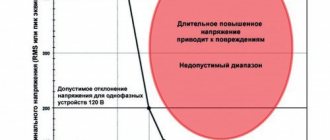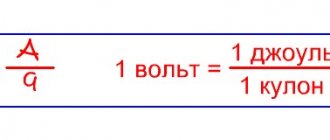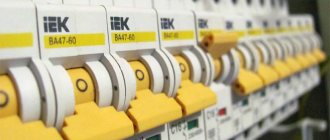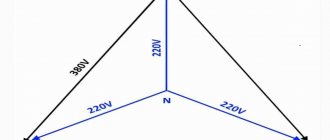What should be the voltage in sockets in Russia according to the standards: 220 or 230 Volts? Why is the voltage in the outlet not 220 Volts? How many volts do electrical appliances need?
In the post-war period, the USSR was faced with the task of restoring the national economy. Much attention was paid to the electrification of the country. Outdated transformers, whose output voltage was limited to 110-127 Volts, were replaced with new equipment with a 220 Volt standard. For a long time in the Soviet Union, and then in the Russian Federation, the most common was the standard voltage of 220 V with a frequency of 50 Hz. And only in 1993 it was decided to bring the rated voltages of existing networks 220/380 and foreign 240/415 V to the value of 230/400 V. (GOST 29322-92 (IEC 38-83)). Today, voltage of 220 or 230 Volts is accepted as standard in more than 150 countries around the world. Within the framework of this article, we will tell readers of the Sam Electric website what the voltage standard is in the Russian network according to GOST.
What is the network voltage
Since 2003, a standard voltage of 230V should have appeared in the sockets of our apartments and private houses. But for the past 17 years this transition has not been completed.
From September 30, 2014, instead of GOST 29322-92, GOST 29322-2014 (IEC 60038:2009) was adopted, establishing what the standard voltage should be in Russia. Now its value is 230 V (±10%) at a frequency of 50Hz (±0.2). But still quite often there is 220 V in the electrical network instead of the expected 230 V.
The rated parameters of AC power networks up to 1000 V are indicated in the table given in GOST 29322-2014.
In the first and second columns, the smaller values are the voltage between phase and neutral (phase), the larger values are between phases (linear). If one value is specified, it is the voltage between phases of a three-phase three-wire system.
The standard voltage of 230/400 V appeared as a result of the evolution of the 220/360 V and 240/415 V systems. Currently, the 220/360 system is no longer used in Europe and other countries, but 220/380 V and 240/415 V are still actively used.
The change in standards was caused by the need to bring electricity into full compliance with European parameters to facilitate the export and import of electricity and electrical devices.
Causes of low voltage in internal consumer networks
External
The appearance of low voltage electricity already at the input to the consumer may be the fault of its supplier as a result of:
- supply of electricity by a substation to too many consumers. In this case, its transformer is overloaded;
- incorrect calculation of the cross-section of wires in power lines (it is small);
- a break or unreliable “zero” contact in a power line, which is fraught with voltage imbalance - some consumers receive a current of too high a voltage, while others receive an extremely low one.
These “external” causes of NV occur most often online. It is quite natural that you cannot solve them yourself. It is necessary to involve neighbors and contact the relevant departments of local authorities.
In addition, voltage in electrical networks may drop due to their aging, poor maintenance, wear and tear of wires and equipment, and an uncontrolled increase in the number of consumers. In addition, the power of electricity consumed by the population is growing - the number of electrical appliances in families, their power, etc. is constantly increasing. Sometimes this is due to differences in seasonal consumption: in residential buildings it is higher in winter, and lower in summer; in holiday villages it is the other way around.
Domestic
This is often the reason for low voltage in electrical networks. It could be:
- too small cross-section of the input cable (from the power line to the house);
- poor contact of this cable at the junction with the power line supplying electricity;
- incorrectly selected cross-section of wires connecting the protective circuit breakers with the internal wiring;
- bad contacts of wires in distribution boxes (boards), etc.
Permissible voltage deviations in the network
Our network does not always have exactly 230 Volts.
Often, outdated network equipment, errors in network design, poor quality maintenance, deterioration of the networks themselves, and a large increase in electricity consumption lead to a significant deviation from existing standards.
The table (GOST 29322-2014), a fragment of which is presented below, normalizes the highest and lowest voltage in AC systems up to 1000 V.
According to GOST 29322-2014, in 2022 the network should have:
- 230 Volt;
- permissible deviations 207 - 253 V.
Where to go to solve the problem
You can influence the situation, but let's decide where to complain if there is high voltage in the network. You need to find out from your neighbors how things are going in their houses and apartments. After you come to a common opinion, contact the supply company or network organization, or find out who the balance holder of the supply transformer substation is.
After this, you need to submit a collective application on behalf of the residents of the house or neighborhood. One application is usually not enough, so the more repeated requests, the sooner the problem will be eliminated! The application must be submitted in two copies, one remains with the applicants, but in it the organization to which the applicant is applying must put a mark of acceptance. Otherwise, you will not be able to prove that you applied.
If your home appliances have broken down due to power surges or an unstable power supply, do the same. We described this process in more detail in the article:.
How much do you need for electrical appliances?
Equipment manufactured in Russia for domestic consumers operates at both 220 V and 230 V, because manufacturers provide the required margin from -15% to +10%. from face value. But in each specific case, the permissible range of power supply characteristics for the device is indicated in the product passport or on its label. For example, computers can operate at 140 - 240 V, and a telephone charger at 110 - 250 V. These markings are often applied to the product itself.
Devices with electric motors are most sensitive to power quality. Here, a reduced voltage can lead to difficulties in starting and shortening the service life of the equipment, while an increased voltage will lead to overloads, which also shorten the service life. If you take a regular incandescent lamp and lower the supply voltage by 10%, the glow intensity will noticeably decrease, and if you increase it, its service life will be reduced by 4 times.
The permissible maximum network limit is 253 V. This value may be too high for electrical equipment designed for 220 volts. The difference in voltage will lead to overheating of power supplies, network adapters, and premature failure of devices.
If you notice that your equipment has begun to overheat or break down, check the voltage in the network. If a deviation of more than 10% is detected, immediately contact your network company. They are required to take measures to eliminate the factors that caused the violations.
Now you know what the voltage standard in the Russian network is according to GOST. If you have any questions, ask comments under the article. We hope the information was useful and interesting for you!
Why is high voltage dangerous?
Despite the fact that many modern electrical appliances are equipped with switching power supplies, this still does not save them from high voltage. As a result, they may fail prematurely, and the warranty does not apply to such electrical appliances.
Heating elements, electric stoves and water heaters are most susceptible to increased voltage. Increased current flowing through the spiral of these electrical appliances seriously reduces their service life. High voltage is also unfavorable for the operation of various tools, as well as other equipment equipped with motors.
First of all, these are: air conditioners, refrigerators, fans, heat pumps, etc. Here, as a result of the increased current, the armature winding suffers. In addition, strong voltage surges lead to an increase in current consumption, so the wiring in the house is heavily loaded. All this can lead to serious problems and even cause a fire.
Why does the voltage drop occur?
The quality of power supply is prescribed in GOST R 54149-2010 “Standards for the quality of electrical energy in general purpose power supply systems”, which states that the voltage change can be within ± 10% of the nominal (or according to contractual terms) during 100% of the time of the measurement interval in one week. In real life, this standard is often violated. The voltage entering a house or apartment can be reduced by up to 50%. This is mainly observed depending on the season, but in some areas it can be a constant phenomenon.
Hazards of AC and DC Current
It is known that electric current can be constant or variable, but not every resident understands the difference between them and knows which has a more serious effect on the body. When asked which current is more dangerous, experts answer – alternating.
The biological effect of electricity directly depends on the intensity with which the body is exposed to it, and this is an important factor due to which fibrillation of the ventricles of the heart occurs. Lethal electric current for humans is prolonged contact with electrical conductors with a force of 0.25-80 mA. This causes spasms of the respiratory muscles and, as a result, acute asphyxia.
Electric current is dangerous for the human body, so basic safety requirements must be observed. It itself can be constant and variable, each affecting a person in its own way. Safe work with electrical installations - compliance with all rules and use of protective equipment.
Expert opinion
It-Technology, Electrical power and electronics specialist
Ask questions to the “Specialist for modernization of energy generation systems”
Duration of damaging effects On the body of each person there are areas that are most vulnerable to electric shock, as they have minimal skin resistance. Ask, I'm in touch!
What current values are deadly?
The depth and extent of electrical damage is influenced by three main factors:
What kind of lighting do you prefer?
Built-in Chandelier
According to the degree of influence on people’s health, the current is divided into:
- tangible - it only causes skin irritation to a person, a safe value is a current strength of up to 0.6 milliamps;
- non-releasing - alternating current, which, due to periodic impulses, causes a person to stick to the current source, this happens with a current strength of 0.025 amperes;
- fibrillation - causes fibrillation of internal organs, primarily the heart, which can lead to its stop; the strength of such a current exceeds 0.1 Ampere.
Electrical current greater than 0.1 ampere causes cardiac arrest
The body of any person resists electric current (described by Ohm’s law), its value depends on the general health of the victim at the time of the electrical injury, the degree of moisture, mental state and even the quality of shoes. Knowing the values of electrical resistance, the values of current voltage are displayed, which becomes dangerous to humans.
According to the canons of electrical safety technology, the following voltage values are considered dangerous to human life and health:
- 65 volts - for residential premises and public buildings with heating and internal humidity not exceeding 60 percent;
- 36 volts – for rooms with high humidity levels up to 75 percent (for example, basements, kitchens in canteens and restaurants, metro station lobbies);
- 12 volts – for very humid (up to 100 percent) spaces (swimming pools, baths, laundries, rooms with boilers).
Additional Information. As for the frequency of the current, its value in the range of 50-60 hertz poses a danger to life.
If the current exceeds 50 milliamps, great harm is caused to health, and at values above 100 milliamps, exposure to electricity even for a few seconds can kill a person.
What can cause the voltage to drop:
- - transformer substation.
Transformer substations have been installed throughout Russia, the vast majority of them were installed back in the days of the USSR, while the calculation of the load on them was carried out based on completely different electrical appliances and their number. The age of operating transformers also plays an important role, which adversely affects the quality of the power supply. But it is worth noting that the engineers of that time laid down a significant margin of safety, both in terms of power and mechanical strength. - - power lines.
The situation is similar with transformer substations. The diameter of the cores and the cable material (aluminum) often cannot withstand increased electricity consumption, and numerous twists of steel over time bring its own losses in quality. At the moment, the aluminum cable is being replaced with copper cable, which is more suitable for loads. - - difference in power consumption between phases.
As you know, there are three phases in the power supply system. Mostly, one of the phases is connected to an apartment or private house. If there is a significant excess load on one phase relative to the other two, then a phenomenon called phase imbalance occurs, which provokes an increase or decrease in voltage.
Everything written above can be present either separately or in combination. Even if you repair or replace one of the components, the situation can only partially improve. There is one more nuance in power supply networks: at the end of the line from the transformer substation, electrical consumers work in more difficult conditions than consumers located closer to the transformer substation (They can consume more power and at the same time the quality of the power supply will be better.
Sensitivity of individual devices to low voltage
Connecting some devices to a reduced voltage network is not dangerous, but it does affect their operating efficiency. For example, you might see the following:
- regular incandescent lamps work, but they shine dimmer;
- electric stoves, ovens, kettles, irons, etc. heat up more slowly.
But this does not threaten the latest model TVs - they can operate over a wide input voltage range.
Low voltage is dangerous for electric motors, electromagnets, and control boards. For example, when the voltage drops, the load on the windings of electric motors increases significantly - the current increases - which leads to their overheating, and often to combustion. This causes refrigerators and pumps to fail at very low voltages. And they don’t burn out only thanks to the built-in protection, which simply turns them off in time. Low voltage is also dangerous for all kinds of electronic devices.










